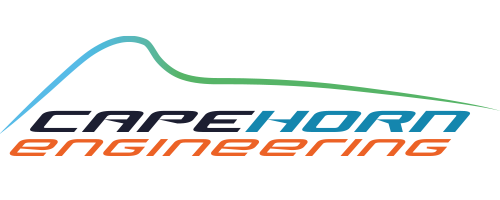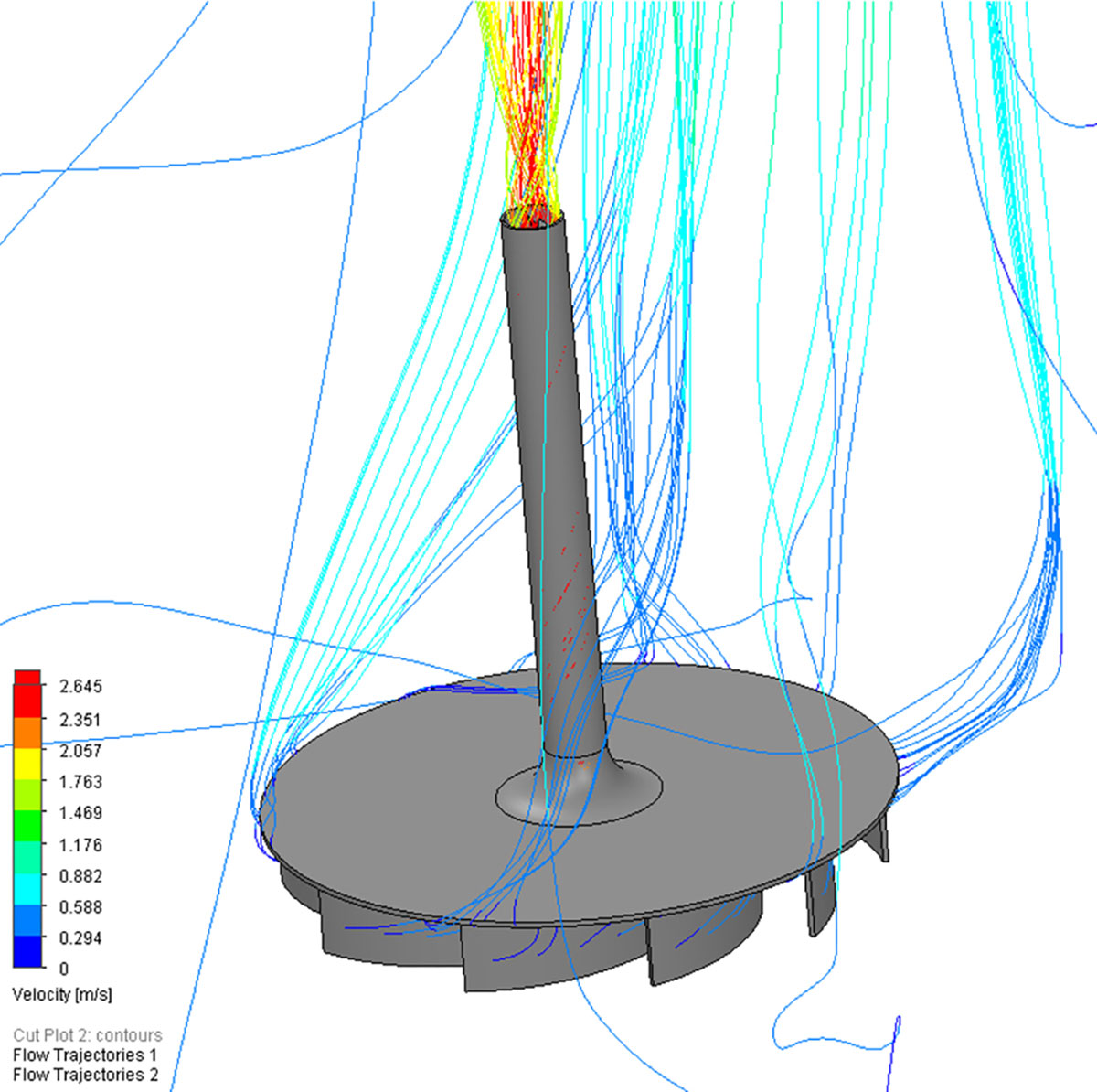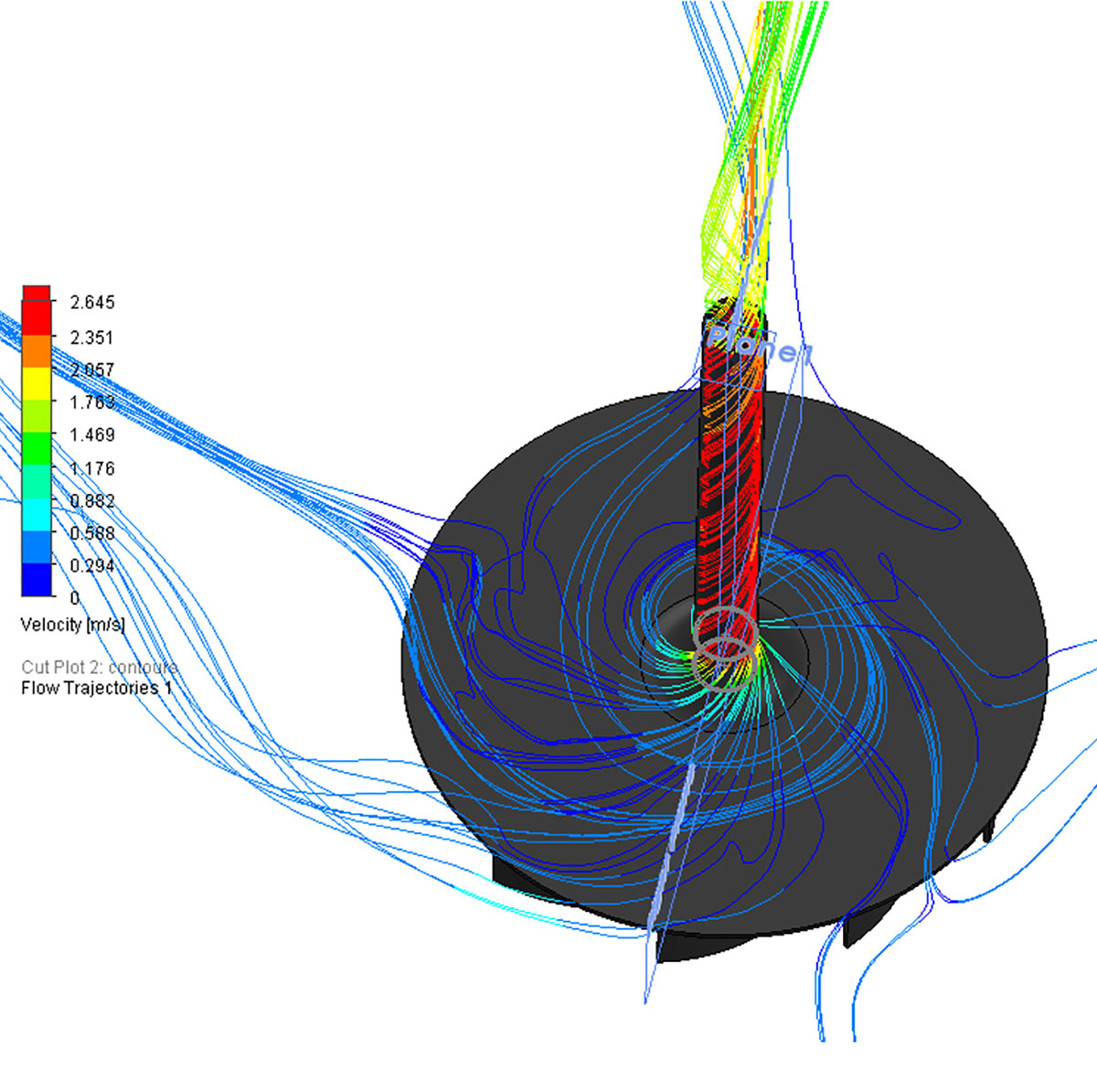Pre-study CFD analysis: To create clouds and make rain in drought areas using solar energy.
We are delighted to be collaborating with our client: Mats Lindqvist to investigate the possibility of using a solar chimney to create clouds and rain.
Solar updraft towers have already been tested and proven, for the purpose of generating electricity. Quite a bit of research has been published on this topic. In this research, an often mentioned side-effect of these towers, or “solar chimneys” is that when humid air is lifted to a high altitude, daytime clouds are formed and potentially also rain.
This project (phase one) will investigate if it is possible to create an enhanced thermal column, daytime cumulus clouds and rain in an otherwise dry, hot and sunny area.
The concept to be analysed is a solar updraft tower built in a location with suitable geography and topography. Solar updraft towers have been successfully proven for the purpose of generating electrical power. (Manzanares, Spain) . They have also been proposed (ref 1-3), but not tested for the purpose of generating daytime cumulus clouds and rain.
Analyses (Ref 2) suggest that a solar updraft tower built in an arbitrary dry location (“desert”) will have to be very high for it to be effective. For the purpose of electrical power generation, tower heights of 1000 m have been mentioned for a 200 MW electrical power tower. (See for example ref 2).
The key objective is to build the updraft tower in a topographically/geographically suitable location. This would be on a south-facing mountainside, near the coastline, in or near a region where more clouds/rain is desirable. By doing this, clouds & rain can potentially be generated with a much lower tower, at a lower cost.
If this investigation indicates that this is feasible with a more moderate tower height, a phase 2 project will be created to build a solar updraft tower in a suitable location. Aside from southern Spain, other suitable locations can be southern California/Santa Barbara, several locations around the Mediterranean sea, Agadir, Morocco, Oman (Arabian peninsula).

This project aims to mitigate climate change and drought in hot, dry areas.
Some dire projections suggest that because of climate change, places like southern California might become uninhabitable in the future. This project aims at preventing this from happening, through improving the water situation and mitigating high temperatures through formation of daytime cumulus clouds.
Why southern Spain? Southern California? South of France?
These regions have potential for the proposed technology. So many people in these regions have already experienced droughts, water shortages and forest fires with their own eyes and will have a personal interest in drought mitigation and climate change mitigation.
Why choose Cape Horn Engineering ?
Having looked at many specialist engineering firms and experts in CFD-simulation and weather modelling, Cape Horn Engineering Ltd, were chosen for their extensive experience in CFD analysis, aerodynamics, renewable energy structures and weather modelling. Work involved will include setting up and running weather+CFD simulations and analysis to validate the project idea. For this pre-study, it is estimated about 4-6 months of work to set up a simulation model, to explore different scenarios etc.
Scientific research
Most research on solar updraft towers has been made with a focus on electrical power generation. Here, water condensation – even inside the chimney – and subsequently above the chimney as clouds/rain to the surrounding environment – is described as an adverse effect (ref 2), as it can negatively impact the amount of electrical power that can be harvested.
Abstract of Ref 3: “The amount of potable water produced by this modified solar chimney power plant is remarkable and might be able to benefit to several millions of people.”
Ref 2 indicates that condensation can already occur inside the chimney: “The end result of in chimney-condensations is likely to be liquid water falling to ground level at the base of the chimney.”
Additional benefits
In addition to rain, a solar updraft tower’s cumulus clouds formed during the daytime reflect incident solar radiation and contribute to a lower ground temperature, thereby relieving high daytime temperatures. At night, such clouds disappear, allowing long wavelength heat radiation toward the cold night sky. In short, daytime cumulus clouds act as “blinds” for the earth – they reflect sunlight during the day, and they disappear at night which helps cool the earth’s surface.
References
Here is a plentiful source of information on a variant of the solar updraft tower, the “atmospheric vortex engine”: http://vortexengine.ca/
Research papers:
(1) Yongjia Wu, Tingzhen Ming, Renaud de Richter, Rüdiger Höffer, Hans-Jürgen Niemann, Large-scale freshwater generation from the humid air using the modified solar chimney, Renewable Energy, Volume 146, 2020, Pages 1325-1336, ISSN 0960-1481,
(2) VanRekenTM,NenesA.Cloud formation in the plumes of solar chimney power generation facilities: a modeling study. JSol Energy Eng 2009;1
(3) Tingzhen Ming, Tingrui Gong, Renaud K. de Richter, Wei Liu, Atit Koonsrisuk, Freshwater generation from a solar chimney power plant, Energy Conversion and Management, Volume 113,2016, Pages 189-200, ISSN 0196-8904,
(4) Xinping Zhou, Jiakuan Yang, Reccab M. Ochieng, Xiangmei Li, Bo Xiao, Numerical investigation of a plume from a power generating solar chimney in an atmospheric cross flow,
Atmospheric Research, Volume 91, Issue 1, 2009, Pages 26-35, ISSN 0169-8095
(5) Schlaich, J., Bergermann, R., Schiel, W., and Weinrebe, G., 2005, “Design of Commercial Solar Updraft Tower Systems – Utilization of Solar Induced Convective Flows for Power Generation,” ASME J. Solar Energy Eng., 127(1), pp. 117-124.
Mats Lindqvist is a Chief Engineer at FLSmidth & Co A/S in Denmark with a PhD in mechanical engineering, he studied cone crushers for crushing rock. He is a specialist in FEA, Rigid body Mechanics, 3D-CAD modelling, Creo (formerly known as “Pro/ENGINEER”,) Creo Simulate (“Pro/MECHANICA,”) MatLab,
His specialties are: Specialist on macro-economy, energy, peak oil, environmental issues and monetary theory.
Author of a newsletter on energy & economy, lecturer on peak oil and the global economy.
Can you help fund this project ?
This project is potentially life saving. Our aim is to use solar energy to help combat the effects of Climate Change.
To help Mats Lindqvist fund his project, please visit his site: https://gofund.me/532461d5




